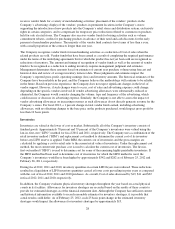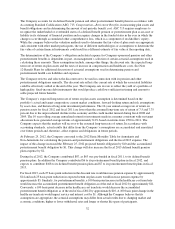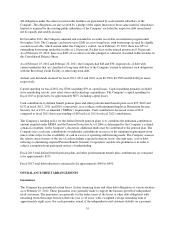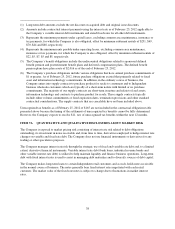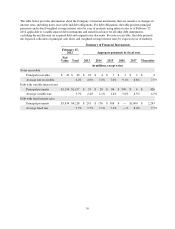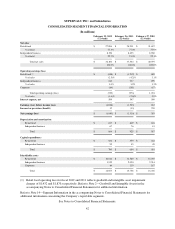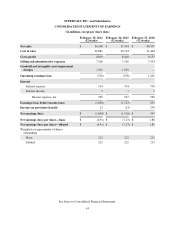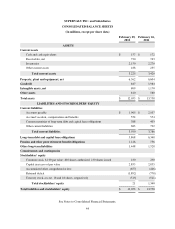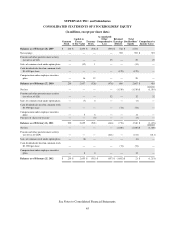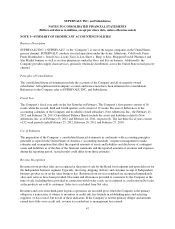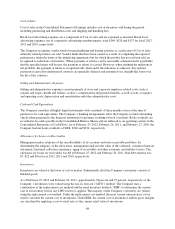Albertsons 2012 Annual Report Download - page 42
Download and view the complete annual report
Please find page 42 of the 2012 Albertsons annual report below. You can navigate through the pages in the report by either clicking on the pages listed below, or by using the keyword search tool below to find specific information within the annual report.
(1) Long-term debt amounts exclude the net discount on acquired debt and original issue discounts.
(2) Amounts include contractual interest payments using the interest rate as of February 25, 2012 applicable to
the Company’s variable interest debt instruments and stated fixed rates for all other debt instruments.
(3) Represents the minimum payments under capital leases, excluding common area maintenance, insurance or
tax payments, for which the Company is also obligated, offset by minimum subtenant rentals of $231, $49,
$70, $44 and $68, respectively.
(4) Represents the minimum rents payable under operating leases, excluding common area maintenance,
insurance or tax payments, for which the Company is also obligated, offset by minimum subtenant rentals of
$22, $5, $7, $5 and $5, respectively.
(5) The Company’s benefit obligations include the undiscounted obligations related to sponsored defined
benefit pension and postretirement benefit plans and deferred compensation plans. The defined benefit
pension plans have plan assets of $2,016 as of the end of February 25, 2012.
(6) The Company’s purchase obligations include various obligations that have annual purchase commitments of
$1 or greater. As of February 25, 2012, future purchase obligations existed that primarily related to fixed
asset and information technology commitments. In addition, in the ordinary course of business, the
Company enters into supply contracts to purchase product for resale to consumers and to Independent
business wholesale customers which are typically of a short-term nature with limited or no purchase
commitments. The majority of our supply contracts are short-term in nature and relate to fixed assets,
information technology and contracts to purchase product for resale. These supply contracts typically
include either volume commitments or fixed expiration dates, termination provisions and other standard
contractual considerations. The supply contracts that are cancelable have not been included above.
Unrecognized tax benefits as of February 25, 2012 of $165 are not included in the contractual obligations table
presented above because the timing of the settlement of unrecognized tax benefits cannot be fully determined.
However, the Company expects to resolve $11, net, of unrecognized tax benefits within the next 12 months.
ITEM 7A. QUANTITATIVE AND QUALITATIVE DISCLOSURES ABOUT MARKET RISK
The Company is exposed to market pricing risk consisting of interest rate risk related to debt obligations
outstanding, its investment in notes receivable and, from time to time, derivatives employed to hedge interest rate
changes on variable and fixed rate debt. The Company does not use financial instruments or derivatives for any
trading or other speculative purposes.
The Company manages interest rate risk through the strategic use of fixed and variable rate debt and, to a limited
extent, derivative financial instruments. Variable interest rate debt (bank loans, industrial revenue bonds and
other variable interest rate debt) is utilized to help maintain liquidity and finance business operations. Long-term
debt with fixed interest rates is used to assist in managing debt maturities and to diversify sources of debt capital.
The Company makes long-term loans to certain Independent retail customers and as such, holds notes receivable
in the normal course of business. The notes generally bear fixed interest rates negotiated with each retail
customer. The market value of the fixed rate notes is subject to change due to fluctuations in market interest
rates.
38


